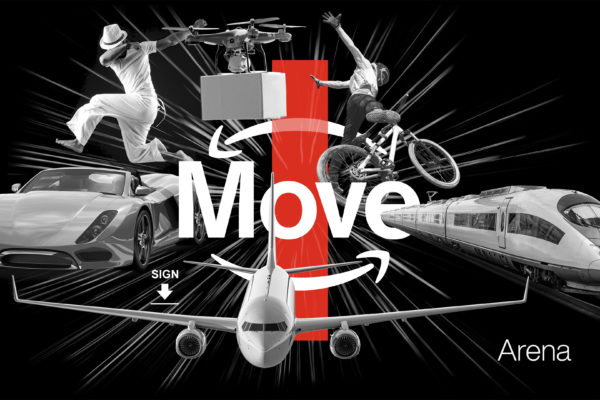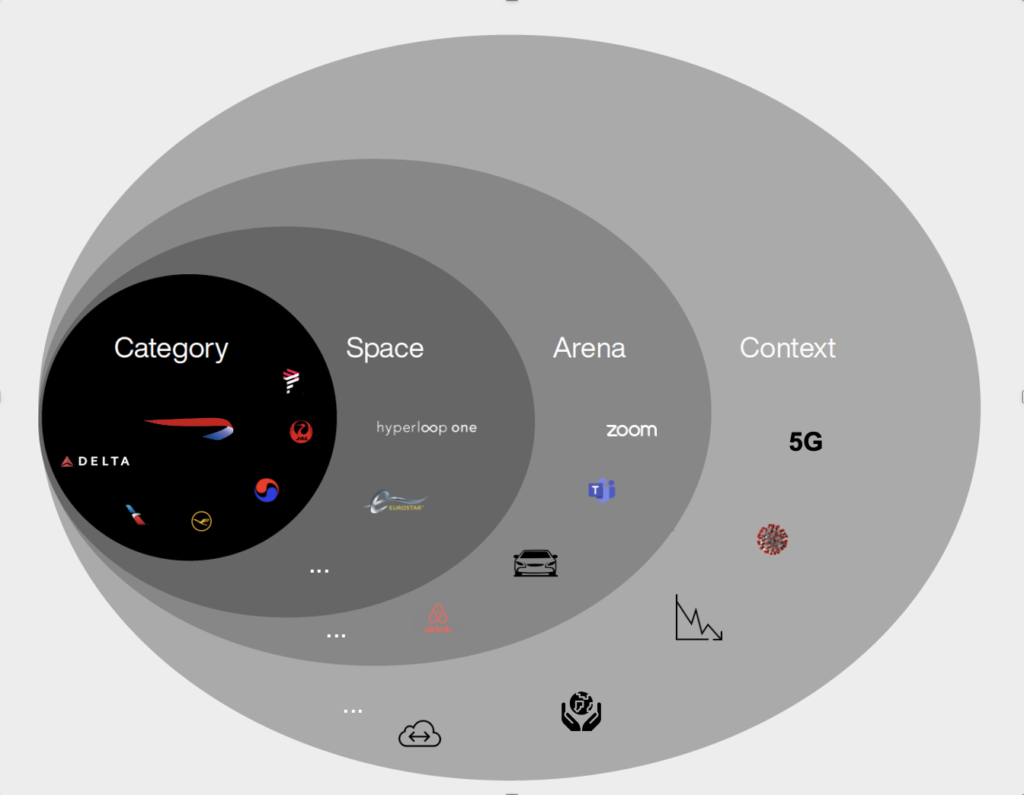Move: into an Arena of Choice

With every technological leap forward humans reconfigure time and space, with profound economic, cultural, and commercial implications. The Silk Roads were once the most important trade routes in the world. While goods flowed along these paths, they were also vital arteries for the movement and interchange of scientific ideas, philosophies, people, and cultures between east and west. In the Decade of Possibility, innovative technology is creating new forms of transfer, anachronizing old constraints, and reforming space and time.
From this dynamic new mix, the Move Arena has emerged.
Traditionally, competition is defined as the major players offering the same type of products and services. In the decade of possibility, this construct is limiting. Of course, competition can still come from other categories that can address similar customer needs or “jobs to be done.” But it may also come from categories that compete for the same customer resources, such as money and time. This marks the transition from industries to competitive arenas.
In the Decade of Possibility, innovative technology is creating new forms of transfer, anachronizing old constraints, and reforming space and time.
Here is a thought experiment to illustrate the point. Alongside Delta in the business travel category are brands such as United Airlines, Southwest, American, and Jet Blue; each player is competing to capture as much of the domestic business travel market as possible. It’s easy to imagine that Amtrak, or even Hyperloop One, occupy an adjacent space and capture a portion of Delta’s business. If we drill down into the business traveler’s Job to Be Done, which is not in fact “Travel from A to B”, but is most likely to be “Build relationship with Person X”, “Share Ideas with Person Y”, or “Sign agreement with business Z”, and then overlay contextual factors, such as a pandemic, better connectivity, or a requirement to cut costs, we can suppose that at the very edges of Delta’s competition are businesses like Microsoft (Teams) and Zoom.

Before dismissing this example as far-fetched, it would be wise to consider the example of United Airlines. Founded in 1926, and valued at $11.3bn, this icon of the golden age of business travel was replaced on the NASDAQ in Summer of 2020 by DocuSign, a 17-year-old e-signature business with a market cap of $30bn. During the Pandemic, DocuSign’s share price more than doubled as people sought to replace face-to-face business meetings, while in contrast airlines, the original enabler of the business trip, have collapsed or required government aid to stay afloat. According to CEO Dan Springer, “Even when the COVID-19 situation is behind us, we don’t anticipate customers returning to paper or manual-based processes”.
In today’s dynamic context, a brand’s major opportunities and existential threats are less likely to come from the usual suspects at the heart of their industries then they are from what’s happening on the fringes. “Snow melts from the edges,” as Columbia Business School professor Rita McGrath notes. “Thinking your competition is within your own industry creates major blind spots.” It is for this reason that Interbrand’s Arenas eschew inside-out assumptions about sectors, categories, and brands, and instead, begin by listening acutely to customers, as a way to identify new growth opportunities for clients.
In the Move Arena, the shifts we observe are registered as much in culture, way of life and livelihood, as they are on the NASDAQ. The pandemic changed our interaction with the world around us and, in the Move Arena, decisions have become less about “how I get to people, goods, services, and experiences”, and more about “how people, goods, services and experiences get to me” with profound implications for brands in this space. Exploring the Move Arena means understanding a great deal of the way people interact with brands.

The pandemic changed our interaction with the world around us and in the Move Arena, decisions have become less about “how I get to goods, services, and experiences”, and more about “how goods, services and experiences get to me”.
The companies competing in the Move Arena – helping consumers travel, ship, drive, fly, deliver and receive – are all helping us move from point A to point B. What’s critically important to understand is that they are doing it at the intersection of two new shifts. The first is that consumers are radically re-evaluating how they choose to live. Second, they have more – and radically different – ways to move. Those shifts are opening consumers up: to new experiences. To new choices. The way we holiday. The way we do business or seek entertainment. The way we receive goods. The environments in which we live.
Understanding the Move arena is key to the vast majority of business and brand leaders for a number of reasons.
- Virtually every brand is also a mobility brand. The way businesses reduce distance – physically and/or virtually – is an integral part of any business model, and an area for innovation. Where does what you do meet your customers? And how might that change next?
- The way brands move people, goods and services is about more than logistics. It is a crucial opportunity to change and grow their relationship with customers – from the presence they have in their lives down to the choices they represent. Your electric fleet says more about you than your sustainability report. Earlier this year, Amazon announced a first order of 100,000 electric delivery vans from Rivian.
- This arena uniquely spans and connects individual choices to collective ones – from the local shop’s parcel appearing on your doorstep to remote working, all the way a capital city’s reclaimed pedestrian zone. At a time when individual consumers and businesses strive to make an impact, decisions about movement will make your brand part of wider conversations. For instance, your local store isn’t offering customers just convenience or experience, but, for instance, belonging – and the chance to be part of an investment in the community.
- If you want to get a preview of the implications of any new technology, watch this arena. In their recent book “The Future is Faster Than You Think”, Peter Diamantis and Steven Kotler offer a compelling example of how drones combine AI, battery tech, materials science, robotics, 5G, and more. Whatever arenas you are competing in, Move provides highly relevant learnings.
- If moving goods and services is not at the heart of what you do, but is part of your service (if, e.g., you deliver what you make), looking through the lens of movement can inspire novel ways of segmenting your customer base based on delivery modes. This, in turn, means providing each segment with an appropriate value exchange and combination of efficiency and closeness. And, as an employer, the extent to which your employees move or don’t – through remote, in person and hybrid working arrangements – means that your brand’s employee experience will need to be engineered in different ways for different cohorts.
Go anywhere. Get anything.